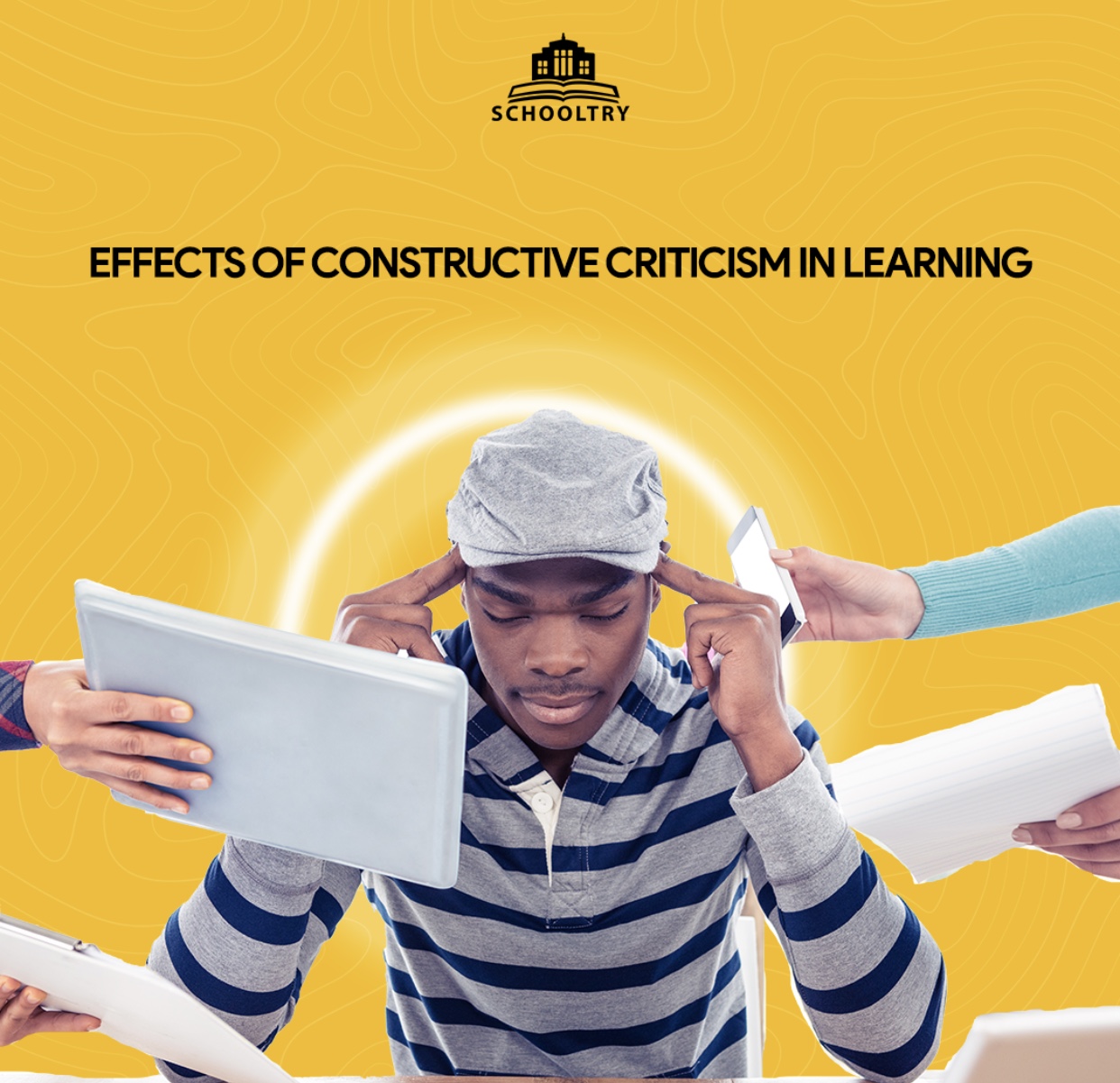Effects of constructive criticism in learning;
Constructive criticism is providing feedback in a manner that acknowledges both the positives and where there is room for improvement.
This is instead of solely focusing on the negatives.
The focus of providing constructive criticism is offering useful advice that can be for better results.
However, Some might view constructive criticism as a form of positive feedback.
The ability to provide constructive criticism is a leadership skill.
It is usually to motivate people instead of causing people to lose morale.
Because of negative feedback which can affect them.
furthermore, this is because positive constructive criticism focuses on future improvement.
Instead of on current wrongs that is existing.
The person giving feedback offers clear steps on what can be done differently.
Such that the person receiving feedback has a starting point for betterment.
Although This is the vital difference with plain criticism.
Giving criticism that only points out the negatives does not offer the receiver a guiding point on how to improve.
Thus, negative criticism is less effective in reaching better results.
However, Giving constructive criticism yields faster improved results than negative criticism.
Because the receiver is given specifics on what needs to change and how to change it.
A good leader will be able to use constructive criticism to carry the team forward.
A major part of constructive criticism is to stay positive.
Especially, when providing feedback that only acknowledges the negatives.
Although the receiver can feel discouraged and unappreciated.
By leading with the positives, the receiver of feedback feels acknowledged for the given efforts.
Also, The receiver will be more likely to want to listen to feedback if it is given in an encouraging manner.
A common tactic is to ‘sandwich’ a constructive comment between two positive comments.
For example, start with a positive aspect of the work.
You follow with an aspect that can be improved and end again with a positive comment.
Constructive criticism seeks to reach improved results in a shorter amount of time.
Hence, the term is ‘constructive’ instead of breaking down the work based on all the negatives.
It is more effective to acknowledge the lesser aspects as room for improvement.
Because it acknowledges that an effort has been made but that the result is not yet optimal.
Although, room for improvement is also friendlier.
However, receivers of feedback respond better to kind and polite words rather than harsh commentary.
Also, this may seem a simple case of semantics, in practice, but it does make a difference.
In this article you will learn some of the positive effects of constructive Criticism in learning;
1. It is helpful:
The only way you can be certain that what you are doing is right is when you get constructive feedback.
However, feedback makes it easier for students to know when they are right or wrong.
It also helps them to know their strengths and weaknesses.
Constructive criticisms are helpful because it helps students to know when they are on the right track.
2. It builds trust:
Constructive criticism helps to build trust and honesty.
Although in situations where students do not understand.
They can always trust their teachers to always be honest with them.
Since they know that their teachers wants the best for them.
The feedback the teachers give to their students helps to improve the relationship and trust between them.
3. It helps students to get better:
Constructive criticism provides an avenue for students to improve and get better.
They do not only get better at what they do they also get to learn new things.
Furthermore, positive criticism helps students to learn from their mistakes and improve on it.
The difference between constructive criticism and toxic criticism is that it will always help the students to become better.
Are you a school owner and you need a web solution to digitize your school work click here to signup for free.



